Here’s what to pack in a carry-on bag every time you travel
8 min readIf you’re new here, you should know I am firmly team carry-on and rarely check a bag, while some of my colleagues prefer to always check a bag.
Even if you insist on checking a bag, certain items should always go in your carry-on.
Here are 18 items to never check.
Identification documents

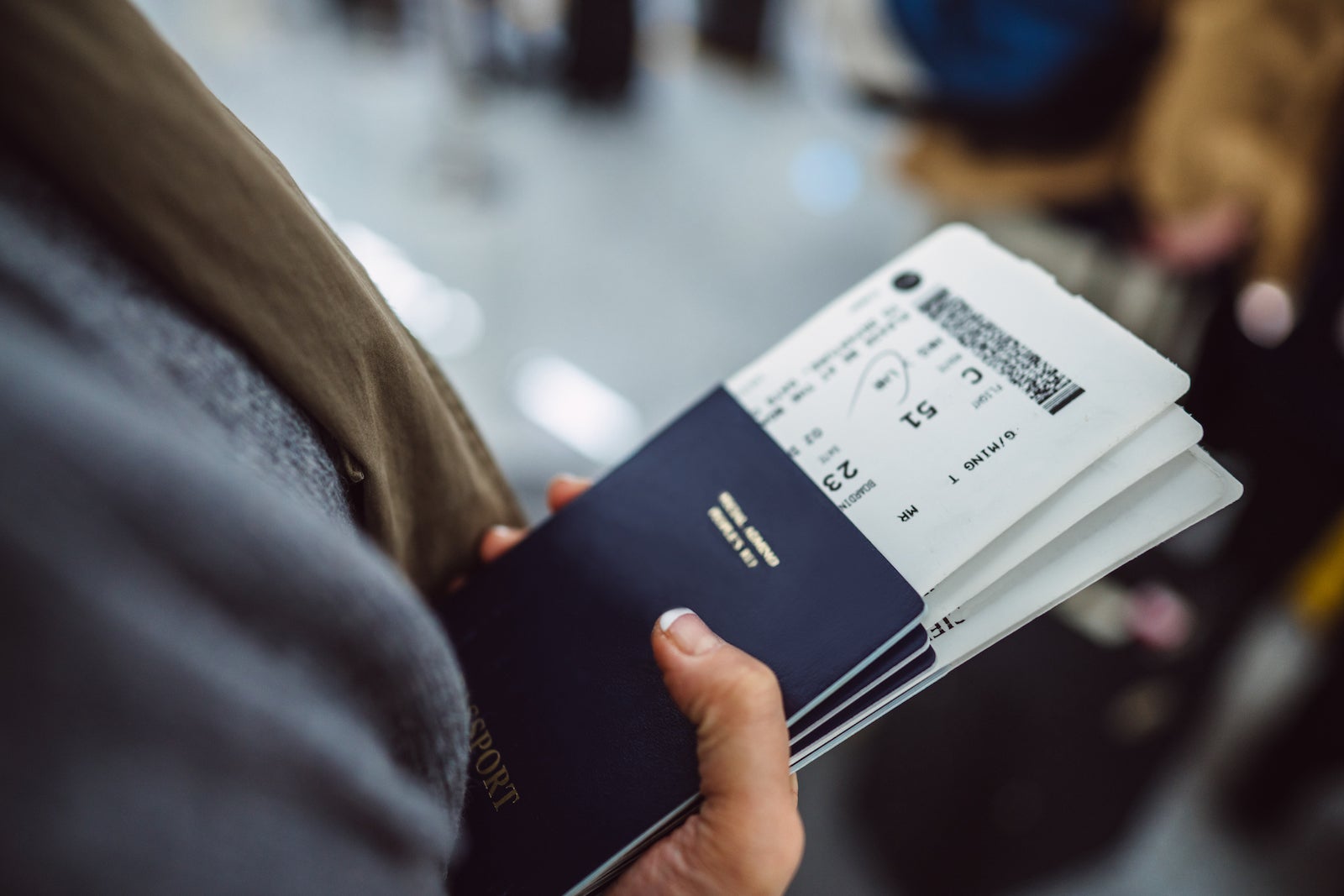
This one should go without — your identifying documents, such as a passport or valid driver’s license, are among the most important items to keep close when traveling, especially abroad.
If you’re traveling domestically and don’t need a passport, those 18 and older still need a driver’s license or other state photo identification card from their state’s Department of Motor Vehicles (or equivalent) to pass through security at U.S. airports.
A full list of Transportation Security Administration-accepted forms of identification is available here.
Once you’ve reached your destination, you’ll likely need to show some form of ID to check into a hotel or rent a car. When traveling internationally, the U.S. government recommends carrying a picture of your passport while keeping your passport (and other valuables) securely locked in your room (in a hotel safe, if available).
Additionally, the State Department advises travelers to print travel itineraries and other important documents in case something happens to their phone or accessing Wi-Fi is difficult.
Phone

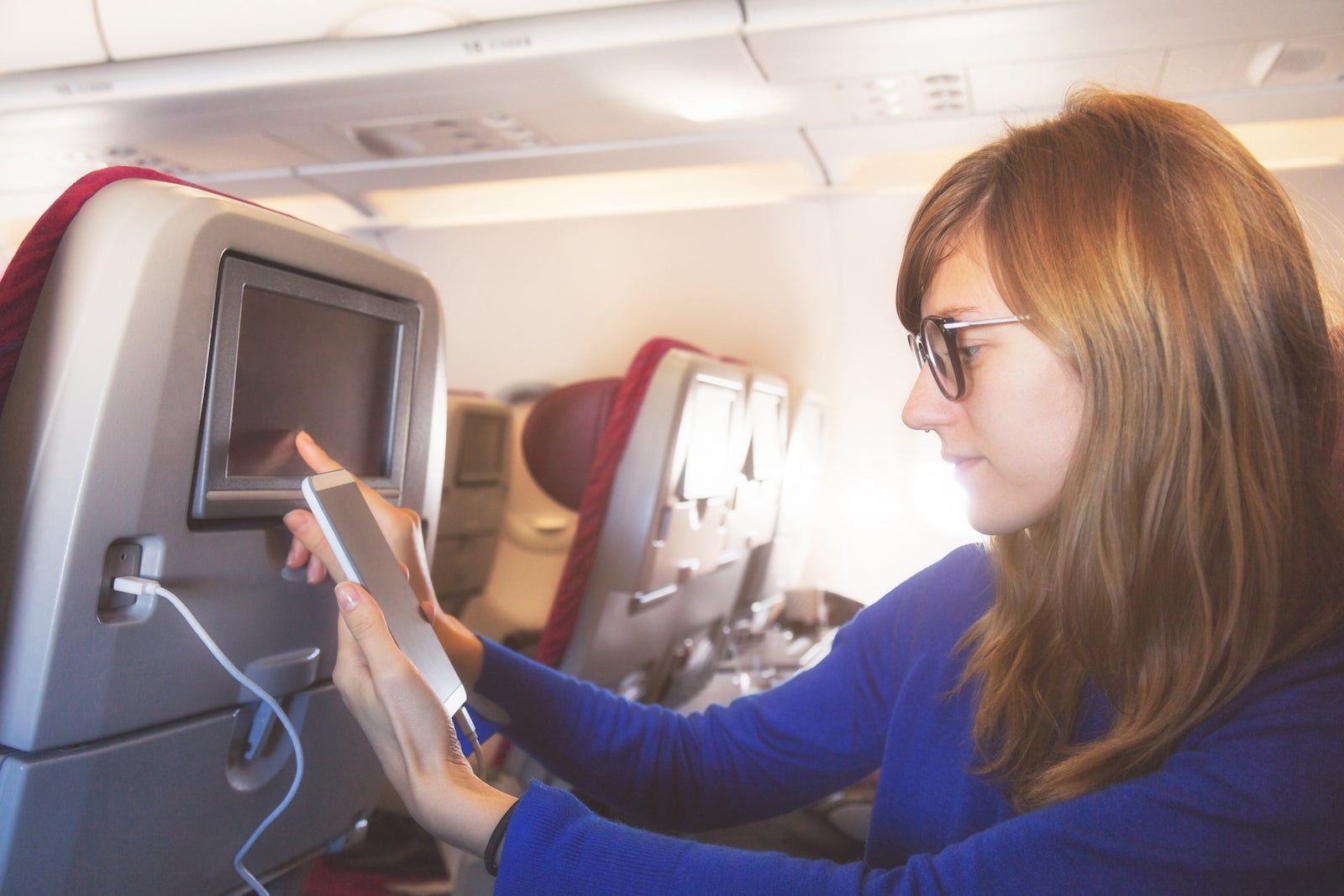
A phone is helpful when traveling, especially if you have a plan with international data.

Daily Newsletter
Reward your inbox with the TPG Daily newsletter
Join over 700,000 readers for breaking news, in-depth guides and exclusive deals from TPG’s experts
From finding your way around cities you’ve never visited before to being able to book rideshare services or make reservations, your phone is essential when traveling.
Related: The best credit cards to use for rideshare apps
Phone charger with a travel adapter
Traveling with your phone also means having to charge it more frequently, which is only possible if you’ve brought the right charger and any necessary adapters (if applicable).
Keep your electronics and chargers in a carry-on for easy access on the plane, where you can also use the in-seat charging power outlets on many airlines.
Charging inflight ensures your phone is fully charged before exiting the plane, minimizing the chance of a dead battery en route to your hotel or other accommodations since your room may not be available for check-in when you arrive.
This is also helpful if you have a lengthy layover between flights since airport charging stations can be hard to find.
As a female traveler who sometimes travels solo, a working phone is crucial. All travelers, solo or not, should pack a portable charger in their carry-on and always bring that with them when they go out and about.
Headphones (wireless and wired)

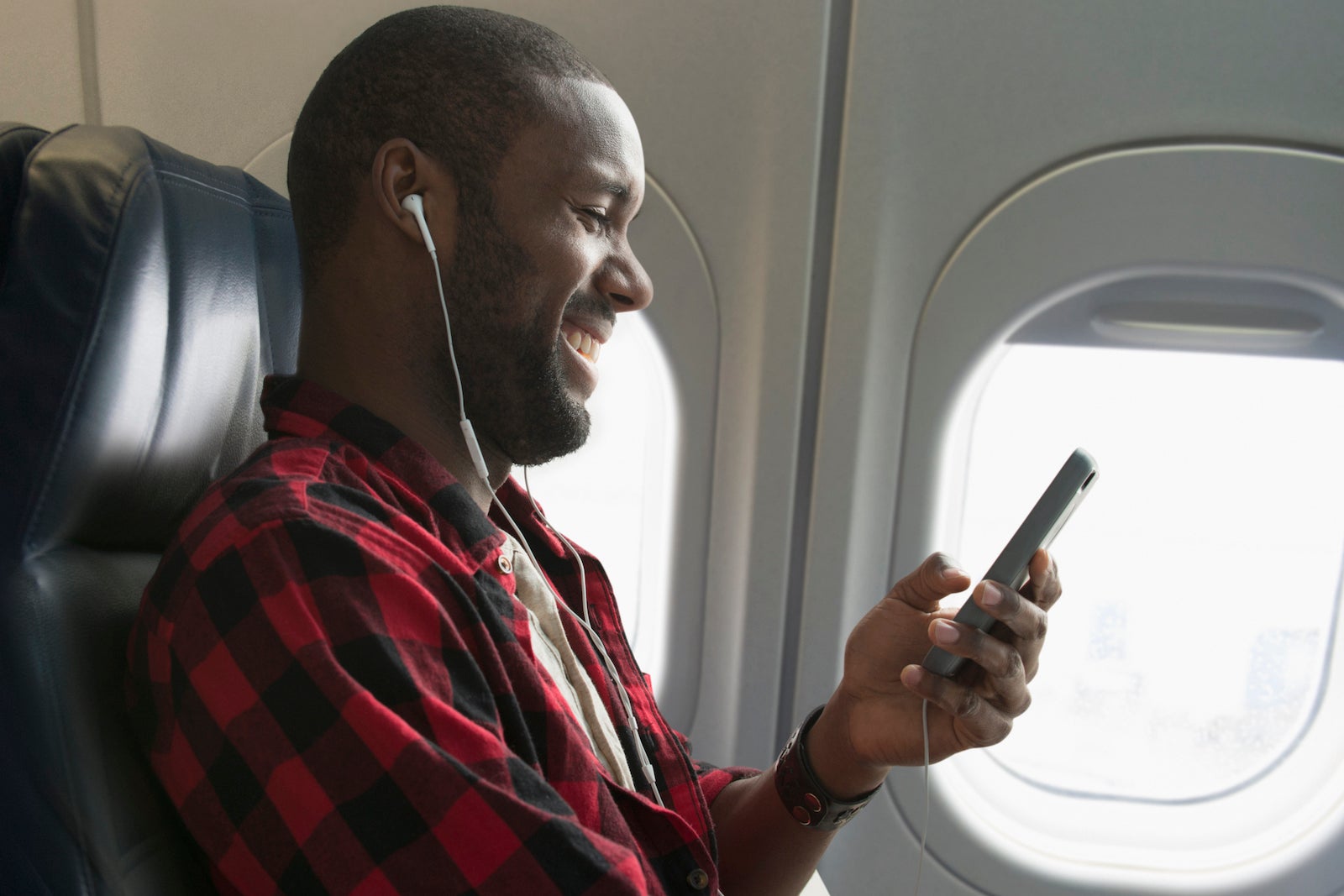
If you’re like me, you’ll never travel without two sets of headphones (one wireless and one not) since wireless ones may run out of battery — and in many cases, won’t be able to connect to the In-Flight Entertainment screen on your plane.
Keep your headphones and AirPods within easy reach at all times.
If you travel with a suitcase that houses a battery pack for charging, such as those from Away, remember that it must fall within TSA guidelines.
Multi-Charging device
In addition to your phone, other Apple products, such as an iPad and Apple Watch, require separate chargers. To lessen the load, consider purchasing a charging device that allows you to charge multiple Apple devices at once.
I’d also recommend keeping all of your chargers contained in their own specific bag or pocket within your smaller carry-on item, preferably the one that sits under the seat for easy access.
A change of clothes

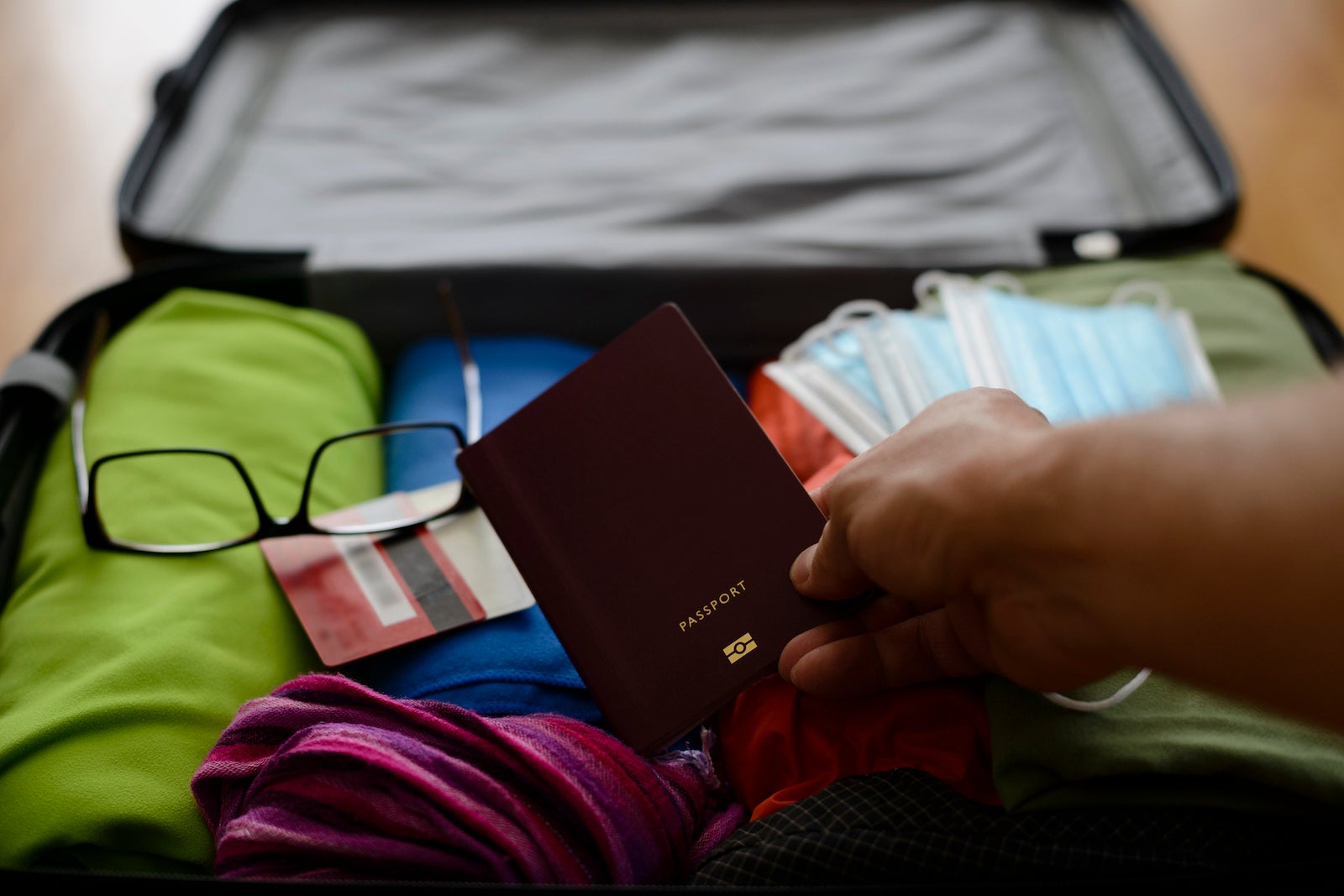
Per my earlier comment, the last time I checked a bag, it was a huge mistake.
I missed my connecting flight due to inclement weather, and my luggage was sent without me to my final destination. I had to spend the night in an airport hotel in Miami with just my backpack and the clothing I had been wearing for almost an entire day. I’m not the only traveler to go through something like this.
“I always keep at least one change of clothes for myself and each of my kids in my carry-on, even if I am checking a bag,” said TPG senior reporter Tarah Chieffi. “If our checked luggage is delayed or lost, or inflight accidents occur, we always have a fresh change of clothes.”
This is the kind of scenario that always seems like it won’t happen to you, until it does.
Tarah also recommends throwing in a grocery bag or large zip-close bag for dirty clothes in your suitcase or using a suitcase that provides a reusable laundry bag.
You’ll appreciate having easy access to a fresh change of clothes, especially on long-haul flights or ones with long layovers, especially when you can freshen up in an airport lounge or an aircraft with showers.
Even if your flight is short and direct, it’s still helpful to pack a change of clothes in your carry-on in case your baggage gets delayed.
Reusable water bottle


Another item we recommend traveling with is a reusable water bottle. Just make sure the bottle is empty before you pass through airport security since most airports limit the number of liquids you can take through security.
Once you head to your gate in the post-security area, you’ll usually find free water refill stations, including some with filtered water.
During your flight, request water and pour that water into your bottle so it’s full at all times. Just remember to take your water bottle (along with your other items) off the plane when you disembark. I’ve lost two Hydro Flasks this way.
Keep in mind that flying can dehydrate you, especially if you’re drinking alcohol. It’s important to pay attention to your water consumption on travel days and make sure you are getting enough.
Considering how much airport stores charge for water and other items, bringing your own water bottle saves money — and eliminates single-use plastic.
Snacks
Like the water, don’t rely on the airport or inflight snacks. Sometimes, when traveling, food outlets may not be available or open when you need them. As someone with dietary restrictions, I always bring snacks. Some of my favorite travel snacks are Go Macro bars (mini version for traveling) and Chomps mini sticks, both high in protein.
Prescriptions and other medications


If you take medication daily, it’s important to first check that your particular medication won’t get you into trouble in the country you’re visiting. If at this point you’re in the clear, pack any prescriptions in your carry-on along with any over-the-counter medications you take frequently or might need, such as pain relievers or allergy medicine, in a travel pill organizer.
I always bring several days’ worth of Tylenol, Benadryl, vitamins, probiotics and a few extra daily medicine supplements in case I stay longer than anticipated.
I also pack a few extra pairs of contact lenses. I wear dailies and prefer them over wearing my glasses, though I bring my glasses as a backup. I also bring bandages and a first-aid antibiotic ointment, just in case.
Assistance items
For senior travelers or those who require assistance, do not keep any assistive/medical device item, such as a walking stick or handicapped placard, out of reach.
A good rule of thumb — if it’s anything you can’t live without for half a day or more, put it in your carry-on, says Erica.
Hand sanitizer, wipes, paper towels and tissues

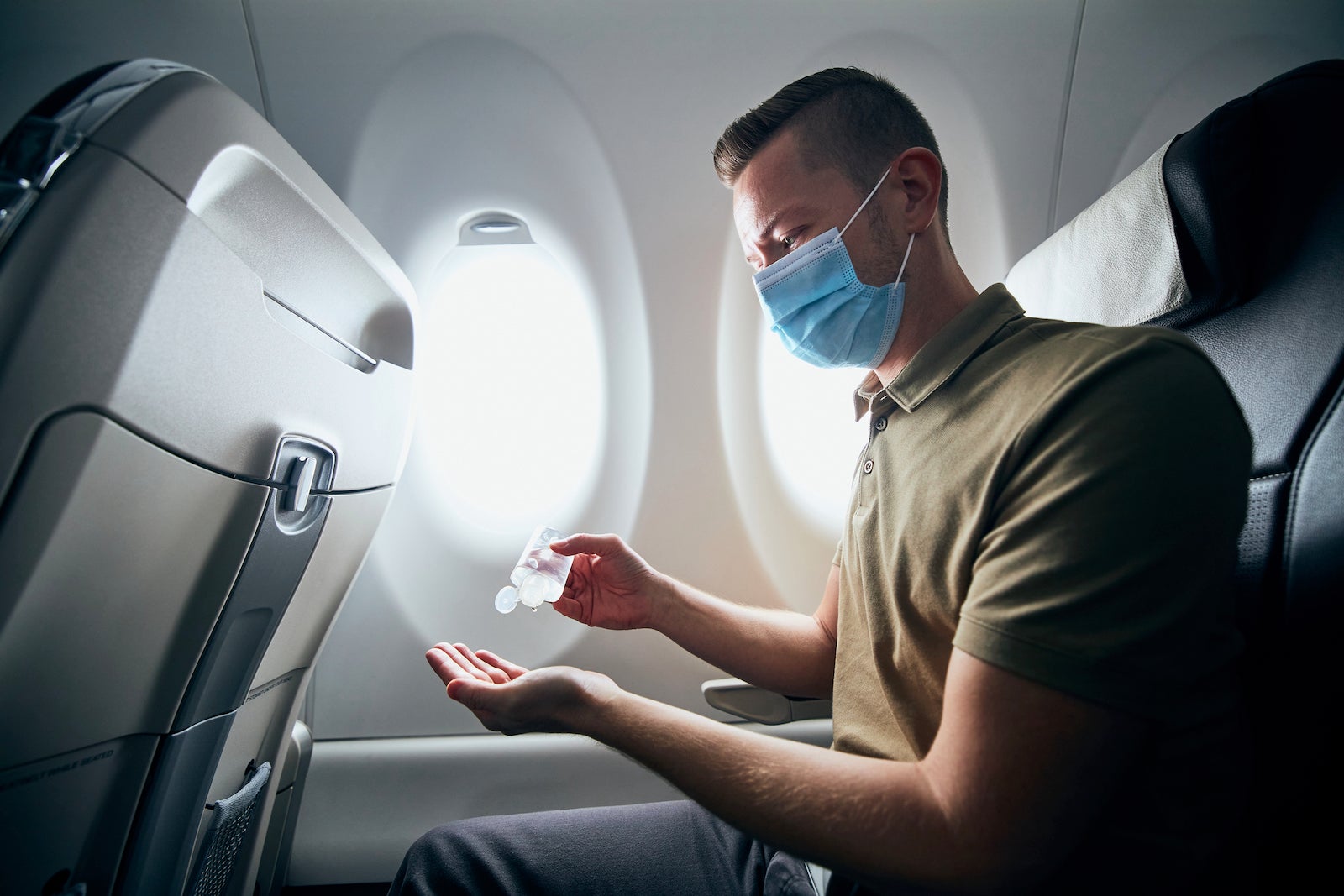
Since the COVID-19 pandemic, many travelers carry hand sanitizer (linking my favorite here) and sanitary wipes to wipe off seats, tray tables, seat belts, etc., upon boarding.
These items are small and can easily fit in your carry-on item. Ensure your hand sanitizer does not exceed the 3.4 ounces or 100-milliliter size requirement.
Other items to consider bringing in your carry-on are paper towels and a washcloth in case of spills or other situations where you need to dry your hands (or wipe your sweat).
You might be able to find tissues and band-aids at airports and on planes, though they’re likely not going to be great quality. Tissues are small enough to pack a few in your carry-on in case of unforeseen circumstances, from the sniffles to a paper cut.
Valuables
Beyond your phone and important travel documents such as your passport, keep your most important items close to you while traveling, including jewelry.
Depending on how sentimental they are to you, these items would fall under the “hard to replace if not irreplaceable” category.
Cash
Even if you don’t routinely carry cash on you day-to-day, we recommend bringing some when you travel for items like cabs, hotel/restaurant tips, smaller souvenir items, tickets and other unforeseen costs.
Cash and credit cards should remain in your carry-on at all times, specifically in a wallet or purse within your luggage, for extra security while also being easier to find. And remember, it’s always the cheapest to pay in the local currency versus U.S. dollars when using a credit card. For cash purchases, it depends on the purchase price and conversion rate.
Kindle or a good book


Even if your aircraft is equipped with hundreds of hours of entertainment like Emirates boasts, there may be times when it is unavailable, such as when you land at your destination or arrive at the gate. There’s also plenty of downtime while flying, such as queueing to board or check-in and waiting at the gate.
If you’re someone who doesn’t jump up the second the seat belt sign is turned off to stand awkwardly in the aisle for several minutes, that’s some spare time, too.
Depending on where you are, you may not have a cellular signal or stable Wi-Fi to pass the time.
A ” rel=”noopener” target=”_blank”>trusty Kindle, or if you prefer, a hardcover book, is a great way to pass the time in these situations.
Something warm to wear
Even if you are flying somewhere warm, aircraft fly at such a high altitude that you may find yourself a little chilly on the flight. This can be especially true when sitting near an exit row door or window. On short-haul flights, most airlines don’t provide a blanket.
While filling your carry-on with a huge winter coat just in case you need it isn’t always a practical solution, something small that you can fold into a small pile is great to include when packing.
This includes a throw, shawl, pashmina, or light windbreaker-style jacket.
Bottom line
Once you’ve decided on the items most essential for your carry-on, be sure to decide what carry-on luggage makes the most sense for them to go in.
For example, if you have two carry-on bags, one smaller one that fits underneath the seat in front of you or one suitable for the overhead bin, think about what items you might need most often throughout the flight and position those in your smaller bag.
For everything else, you can always retrieve items from your larger bag from the overhead bin.
Related reading:
Foreign transaction fees: Everything you need to know


